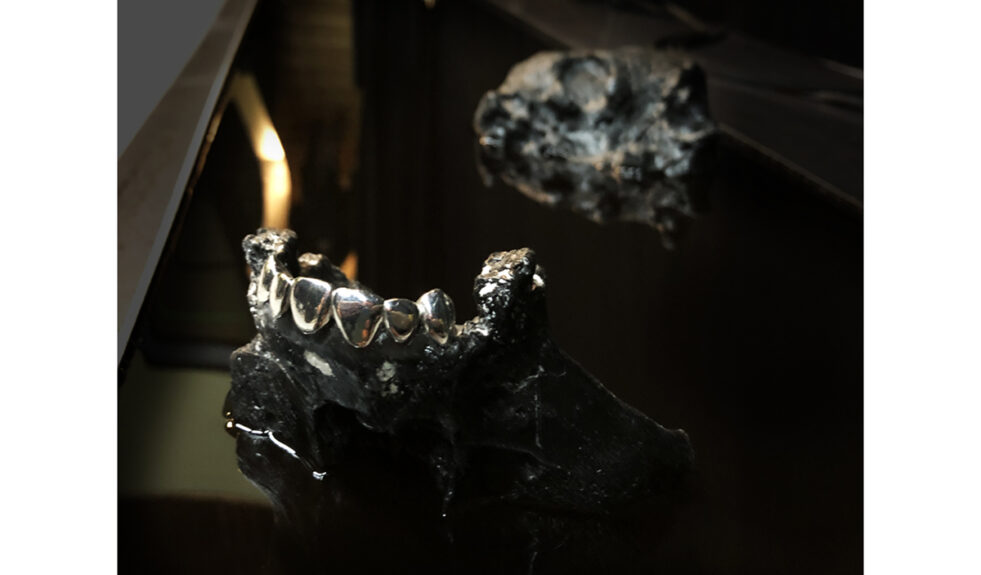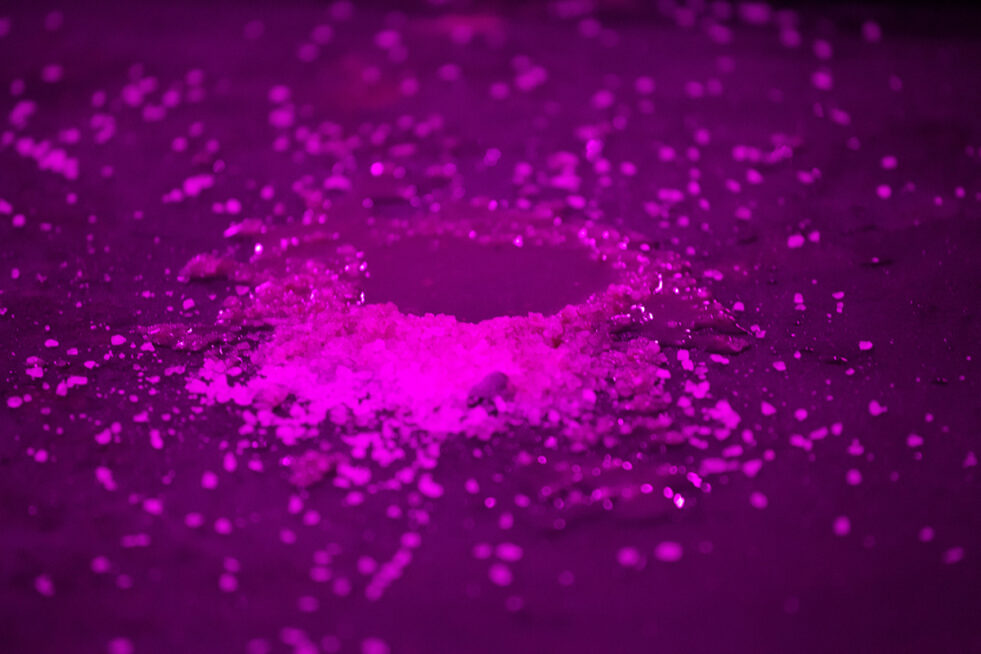Bucarolito was a collective action carried out in Little Haiti (Miami) where a group of 90 people ingested clay in the form of “Búcaros”. These vases were replicas of the ceramics named “Búcaros the Indias”, which the royal family and aristocracy ate in Spain during the 16th and 17th Century. Those particular clay ceramics had the medicinal and magical ability to cure and transform the way in which human biology functions. The clay was collected from special places because of their pharmaco-magical properties. The most valuable clay was traded from Tonalá, Mexico and taken to Spain for its consumption in the form of aromatic ceramic vessels. Each grain of clay contained a place, was transported to another place, and transformed the body of their ingestors. During the collective action land was ingested, possessed and incorporated into their biological system. A group of Miamians ingested the foundations of the transitory and mutant Miami.
The project focuses on one of the most common of geophagias: Clay. Bucarolito is a research around the questions and meanings of this old and stigmatized practice. It is difficult to track the origin of clay ingestion. Clay has the living trace of Ghanaian white clay ingestions called “agatawe”, “ayilo”, or “shile” or far of this diaspora, they could be an action of land possession. However, it is known that since the time of the Pharaohs the inhabitants of the banks of Nile ate the slime of its banks to consider it a fruiting food. In ancient Greece the same clay used for the manufacture of ceramic known as Terra Sigillata, was used to treat a number of diseases. Galen, much later, visited the Island of Lemos and took to Rome a good amount of clay that was employed to treat poisonings. For many cultures clay is the matter of creation, it is the sediment of earth that with water becomes flexible and malleable to be transformed. Clay is the body always able to be transformed.
I
Eat
I
Become
The project concentrated on the complex land of Miami. It followed a trip to Haiti to witness the Vodou rituals of Saint Jacques and the production and ingestion of “galette de boue” (clay cookies). The journey sought to explore the relations between Vodou, clay, clay ingestion and its possible significance to the Haitian community. Bucarolito continued in Little Haiti (Miami), where the action took place by eating Miamian Land in the form of Bucaros. The Bucaros serve as a strategy to re-signify the collective action of eating clay.
3.77 billion years ago, abiogenesis: non-living matter transforms into living matter. Clay microcrystals grow maintaining the atomic structure that repeats in a tightly-packed crystal. Thermal and pressure conditions accelerate their division into new crystals, from one “mother” crystal giving rise to “daughter” crystals. Clay crystals behave as living systems. When a crystal breaks apart, new quirks are introduced by the stress of fracturing. The process is similar to genetic mutation. (…)
Finely-grained as invisible.
amalgamated by water
trapped in the mineral structure
each grain a time of earth
all together in a hybrid dough
mother dough

A group of people smash a big rock of clay into small pieces. Some of them put the small fragments
on their tongue and wait for them to dissolve with their saliva,others bite them and swallow. It is like
ingesting a place, they said, each bite is a piece of land that becomes us. Passing from one body into
another, they just consider the earth as another body, the land as an organ. Their lips turn white from
the clay, some children roll on the clay pond. They are organs of a big collective body. Clay into body,
body of clay, transfusion of bodies. They are the land, they are the others.
«The habit of “eating bucaros”, “eating clay”, or “eating plaster” is rooted in Spanish society enough to be included in dictionaries in descriptive forms or …, or in the literature of the Spanish Golden Age» (Serena, 2009)
«It is said that they have many properties, that they work against poison and heal several illnesses.» (Serena, 2009)
«The clay and crockery that Velázquez painted are clays of bright colour and strong smell […] Some small pieces of jewelry have been invented for the ladies, so pleasant to taste that they drink the water and eat the clay; thus not a simple job for the confessors to halt this vice…» (Serena, 2009)
«It’s a matter of ideology.» (Serena, 2009)
For rent
plastic due
particle size
atomic geometry
water content
become hard
brittle
non–plastic
drying
firing
«Some sort of shame and protection of intimacy seems to have prevented historians from giving accounts of this mania. » (Serena, 2009)
«The nuns said that ‘because what was eaten was such small amounts, it was of little importance; it seemed to me that it wouldn’t offend God […] these temptations were tedious to God himself while they generated love in me, throughout my childhood I remember feeling more embraced, more at one with God.» (Serena, 2009)
‘The ingestion of clay would lead to a state of dreaminess and visions, good for meditation. […] When eaten, what was sought were effects similar to soft drugs, as we would say today, and as the name they were given implies: “inebriating” (emborrachativas)’ (Serena, 2009)
Kaolin-based activated clotting
Pharmaceutical Grade Kaolinites

Puerto Rican theorist Julio Ramos coined the term pharmacoloniality to denote an ‘inverse process of colonization’, whereby Latin American substances—sugar, tobacco, coffee, cocaine, music—‘wake up’ and develop European rationality.
They realized they could create land. Now soil was land. Not anymore, the material on the surface
of the ground in which plants grow, the surface of the earth that is notcovered by water, could be
used for a particular purpose. Land was an idea that could be possessed and exchanged. It could be
occupied, owned, re-signified and reassessed. The food of the earth was the soil.

Bucarolito occurred at Emerson Dorsch (Miami) in September 2019, curated by Tyler Emerson-Dorsch and produced by Emerson Dorsch.
The project was developed in collaboration with Santiago Reyes Villaveces, Orlando Plein, Blanca Pujals the Miami-based ceramicist Kira Tippenhauer and Mercedes Gavazzi and Emilia Christiana.



















